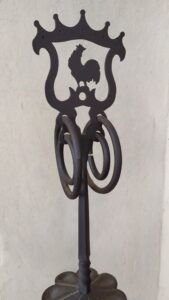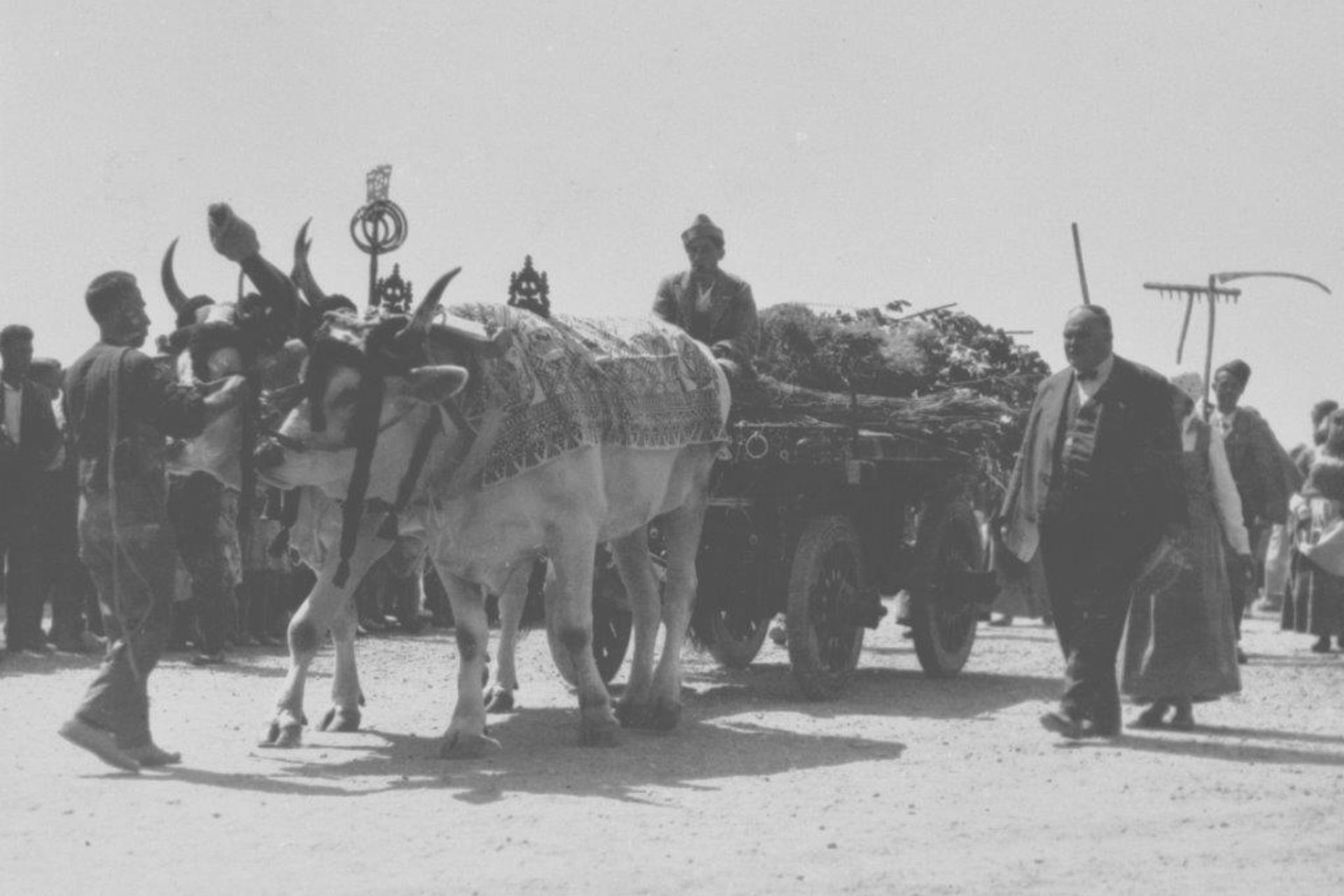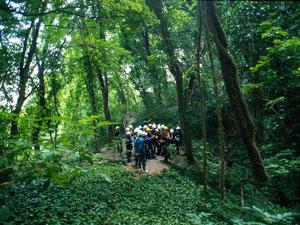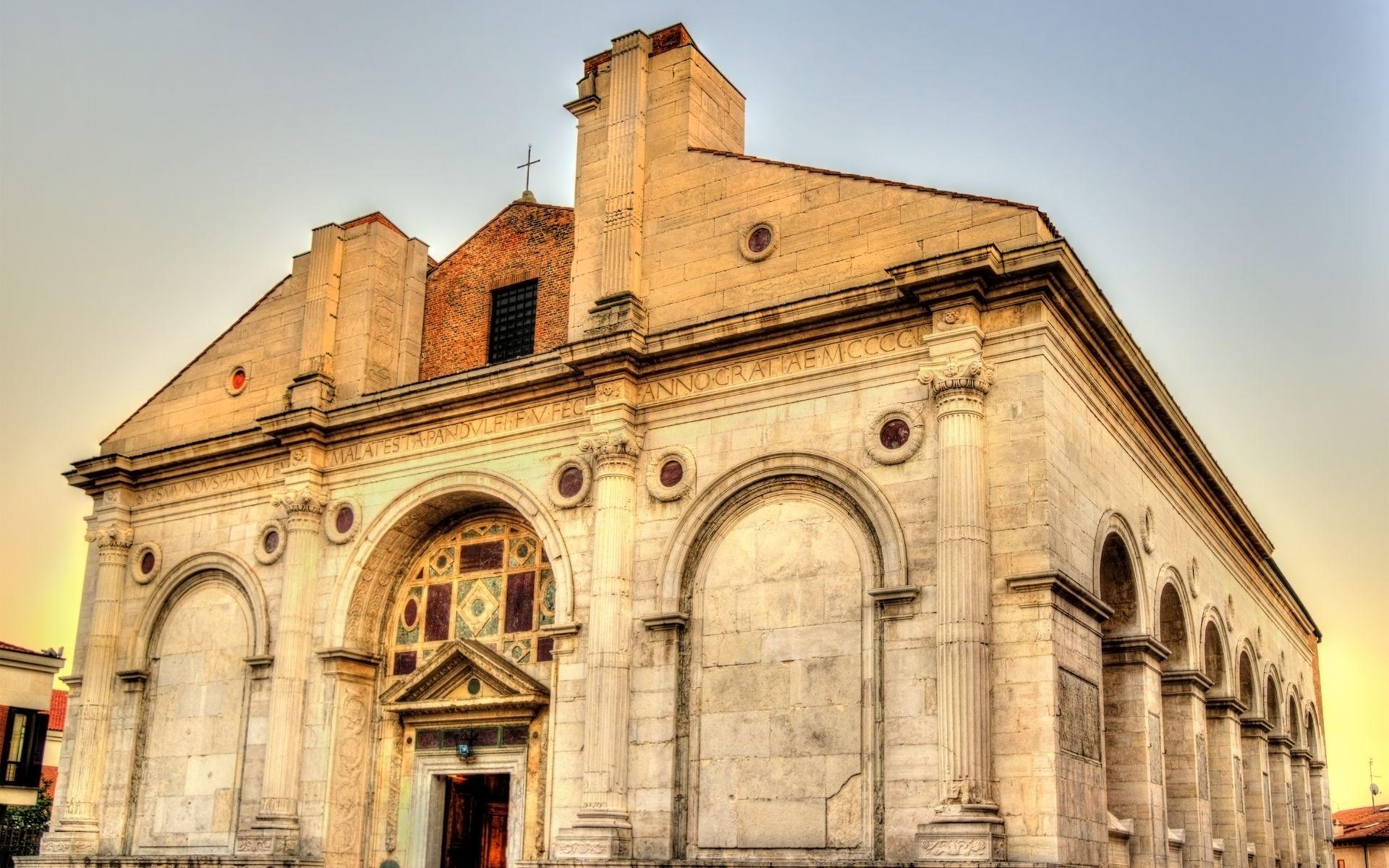La cavejathe emblem par excellence of Romagna, is an object that encapsulates tradition, functionality and symbolism. From a simple agricultural tool to a cultural and identity symbol, the caveja has crossed the centuries, transforming itself from a utilitarian element to a representation of Romagna's spirituality and culture.
Function and use in rural tradition

Originally, the caveja was a wrought iron pin used to secure the ox yoke to the drawbar of the cart or plough, preventing it from slipping backwards. It was an essential element for towing and ploughing, central activities in peasant life.
- The yoke (is zov o is zog in Romagnolo dialect): a sturdy shaped piece of wood, fixed on the neck of the beasts by means of straps tied to the horns and a chin strap to prevent lateral movements.
- La cavejaInserted obliquely into the drawbar of the wagon, it served to secure the yoke. During steep descents, it protected the animals from the wagon, which could have hit them in the legs, while striking the strong horns without causing pain.
Initially made of hardwood (boxwood, acacia or rowan), the caveja was later replaced by metal versions, which were stronger and more durable. Blacksmiths began to decorate it, adding forged steel rings which, oscillating during movement, produced a rhythmic and recognisable sound. The so-called caveja cantarëna ('canterina') became a means to signal the arrival of a cart along country roads or to attract attention during fairs and festivals.
On these occasions, farmers competed to show off the most elaborate caveja or the one with the most melodious sound, transforming the functional object into a decorative and prestigious element.
The symbolism of the caveja
Over time, the caveja has taken on symbolic and propitiatory meanings. The decorations on its upper part, known as 'frying pan'included allegorical and religious symbols:
- The rooster: vigilance and protection.
- The crescent and the suncycles of nature and vitality.
- Christian symbolslike the cross or the dove: faith and peace.
 Moreover, the caveja was often used in superstitious rituals to protect crops, prevent natural disasters or predict the sex of unborn children. During Holy Week, the rings of the caveja were symbolically tied, following the ritual of silent bells.
Moreover, the caveja was often used in superstitious rituals to protect crops, prevent natural disasters or predict the sex of unborn children. During Holy Week, the rings of the caveja were symbolically tied, following the ritual of silent bells.
The caveja in the culture of Romagna
The caveja was not limited to the peasant world. Thanks to figures such as Aldo Spallicciwho in 1912 dedicated the poetry collection to her La Caveja dagli anëll, and to Francesco Balilla Pratellawhich extended its importance to the world of music, the caveja became the official symbol of Romagna.
The caveja today
Today, the caveja is no longer used in the agricultural context, but continues to live on as graphic and cultural symbol. It is represented in the logos of many activities linked to the area - restaurants, hotels, craft businesses - and is often present in historical processions, re-enactments and cultural events. Its image remains a celebration of Romagna's identity, uniting past and present.
The caveja represents more than just an agricultural tool: it is a universal symbol of tradition, resilience and territorial pride, an authentic bridge between the rural life of the past and the modern culture of Romagna.




